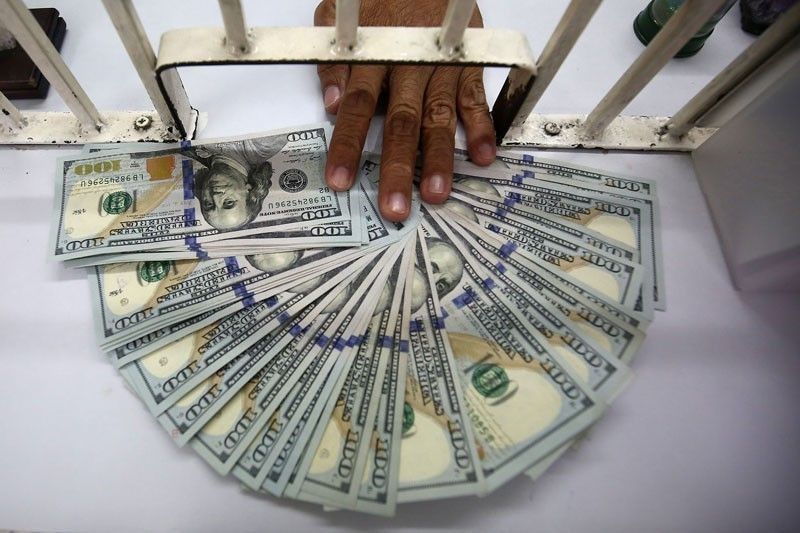Remittances show time-tested strength with slower 2020 decline

MANILA, Philippines (UPDATE 4:50 p.m., Feb. 15) — Money sent home by Filipinos abroad inched down last year less than estimated, becoming an obvious bright spot for a struggling economy that was buoyed anew by earnings from a 2-million strong legion of overseas workers.
Cash remittances coursed through banks contracted a measly 0.8% year-on-year to $29.9 billion to end 2020, the Bangko Sentral ng Pilipinas (BSP) reported on Monday. The decline was a first since 2001, but nonetheless fell far less than the central bank’s projection of a 2% slump.
Including hand carried earnings and those delivered in kind, personal remittances fell also 0.8% to $33.2 billion.
The performance of the Philippines’ top dollar earner highlights the reliability of these inflows that come from over 10 million Filipinos overseas, around 2 million of whom are employed and send a large chunk of their earnings back to their families as allowances.
It was a time-tested resiliency that once thought will not deliver during a pandemic that saw over 500,000 workers sent home by lockdowns and economic disruptions. Nonetheless, last year’s performance was weaker than recent meltdowns such as in 1997, at the height of the Asian financial crisis when cash inflows expanded by a whopping 33.3%. During the global financial crisis of 2007 to 2008, the same rose 13.12% and 13.7%, respectively.
That said, the minimal decline in remittances last year was enough to disappoint what BSP Governor Benjamin Diokno was once said as “overly pessimistic” forecasts. Among them was that from Alvin Ang and Jeremaiah Opiniano, whose research included the study of overseas remittances and projected once a 20% drop in overseas inflows for last year.
Both said unforeseen factors came into play. “It’s peso appreciation, savings brought home by returning (OFWs) for good, (and) better capture of data through fintech,” Ang of Ateneo de Manila University said in an online exchange.
Opiniano of the University of Santo Tomas Journalism School agreed. “But having lower projections are not the point…We better know more from migrants themselves how far can they go— with the pandemic continuing and new variants threatening pandemic response and vaccination efforts— to send more money home,” he said in a separate exchange.
The peso strengthened 5.8% against the US dollar last year, which means that to sustain the amount of peso allowances, Filipinos would have to top up on their typical dollar repatriations. At the same time, with most cities in lock down, workers used to send money outside the banking system were forced to shift back to formal channels to get their earnings reach their families.
On Monday, the peso continued to strengthen, breaking through the P47 to a dollar to close at P47.93, the strongest since September 22, 2006.
Stronger than BPOs
All these work in favor of remittance data that now reflected remittances’ viable strength even amid the most tumultuous year. In contrast, the other prominent dollar source, business process outsourcing earnings, was not so lucky and decreased by a much deeper scale. The nascent tourism sector was also blocked on its upswing under the Duterte administration after travel was shut down to prevent the virus from spreading.
But remittances held up, a phenomenon Diokno once said to be driven by its “altruistic” nature. BSP data showed that last year’s personal remittances accounted for 9.2% of gross domestic product— a broadly steady share over previous years despite a historic 9.5% slump in GDP. In December alone, just in time for the holidays, cash remittances soared to $2.9 billion, the highest for the year.
By source, the US remains to account for the biggest share of 39.9%, primarily because of the use of US banks offshore to send money. It was followed by Singapore, Saudi Arabia, Japan, the United Kingdom, United Arab Emirates, Canada, Hong Kong, Qatar and South Korea.
Despite the better-than-expected data, and while senators debated on whether to establish a Cabinet-level agency only to deal with OFW affairs, Opiniano warned all might not be well for overseas workers trying their best to send money home.
“Filipinos abroad truly tried their best to provide for their families when mobility restrictions eased, and some economic and business activities happened in host countries. They may have also sent their savings and, hoping that I am wrong, nothing or very little savings are left,” he said.
For Nicholas Antonio Mapa, senior economist at ING Bank in Manila, remittances are losing its edge. "For all the heroics displayed by our modern day heroes, we do note the fading punch packed by once very potent foreign exchange flows from abroad," he said in an email.
Editor's note: Added peso closing on Monday, Mapa's comments.
- Latest
- Trending



























